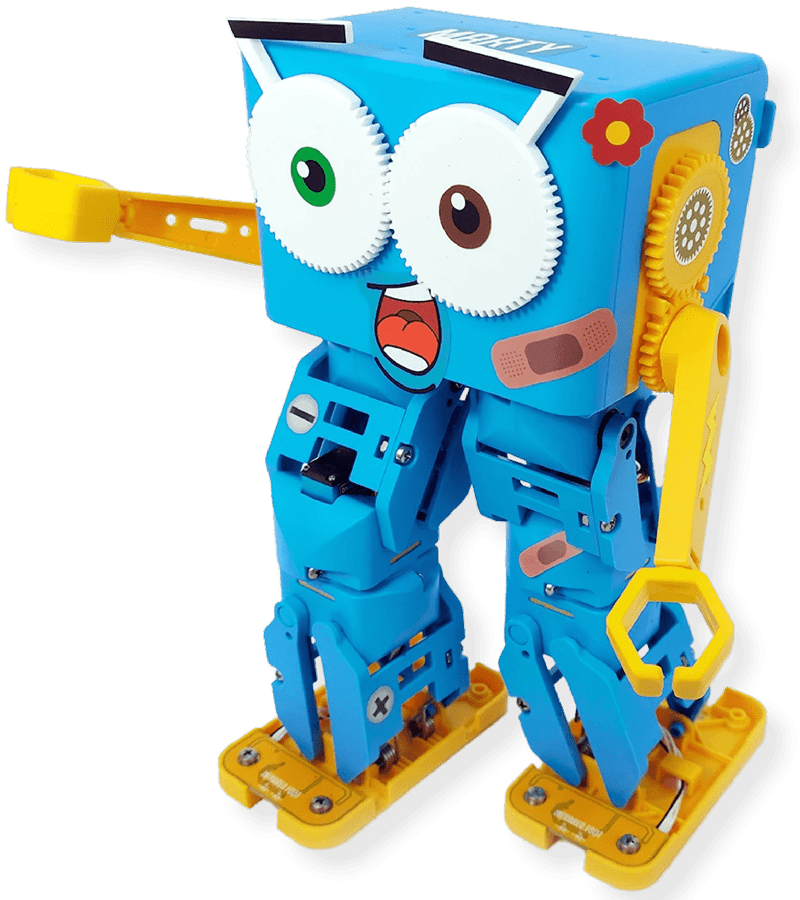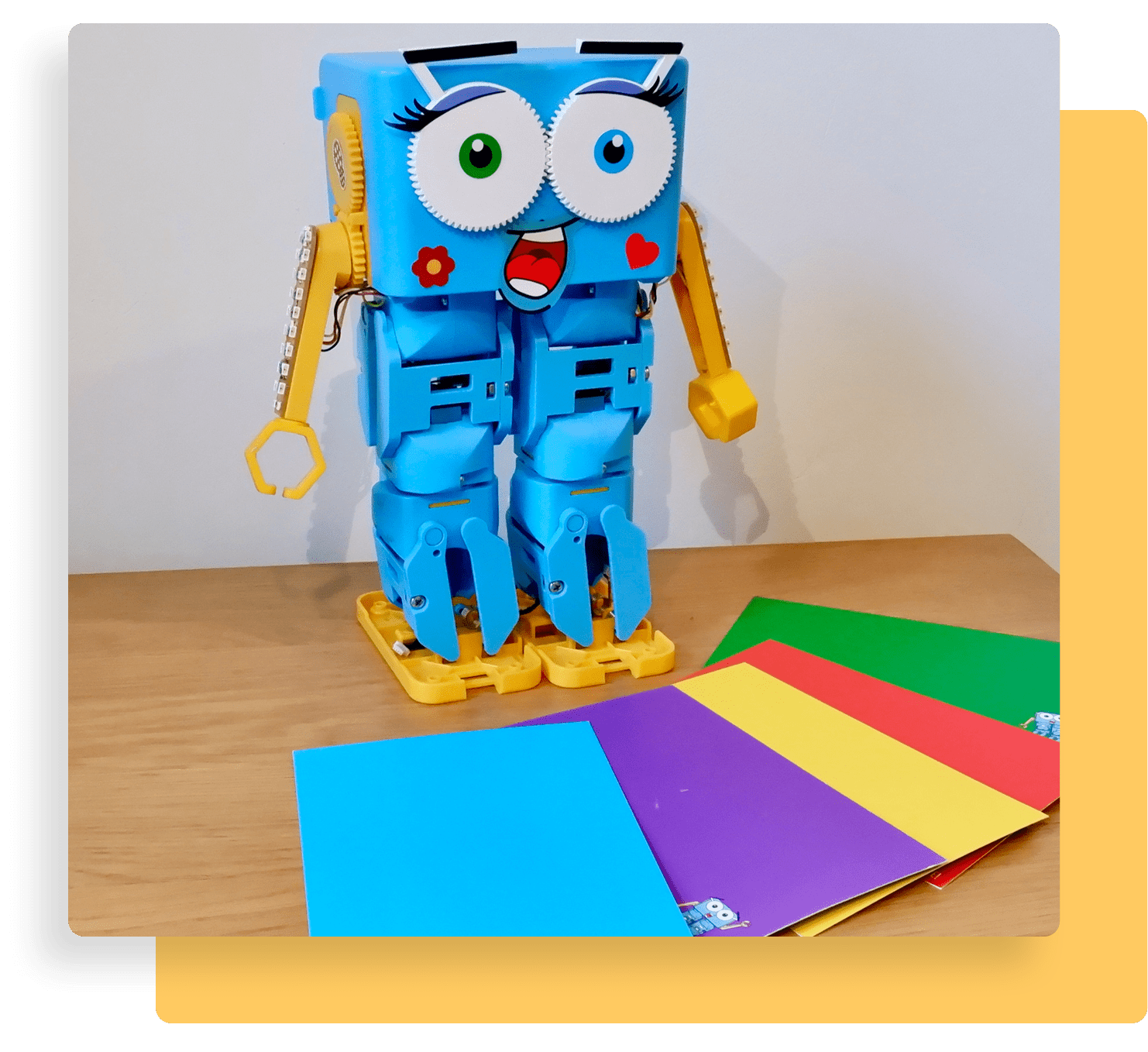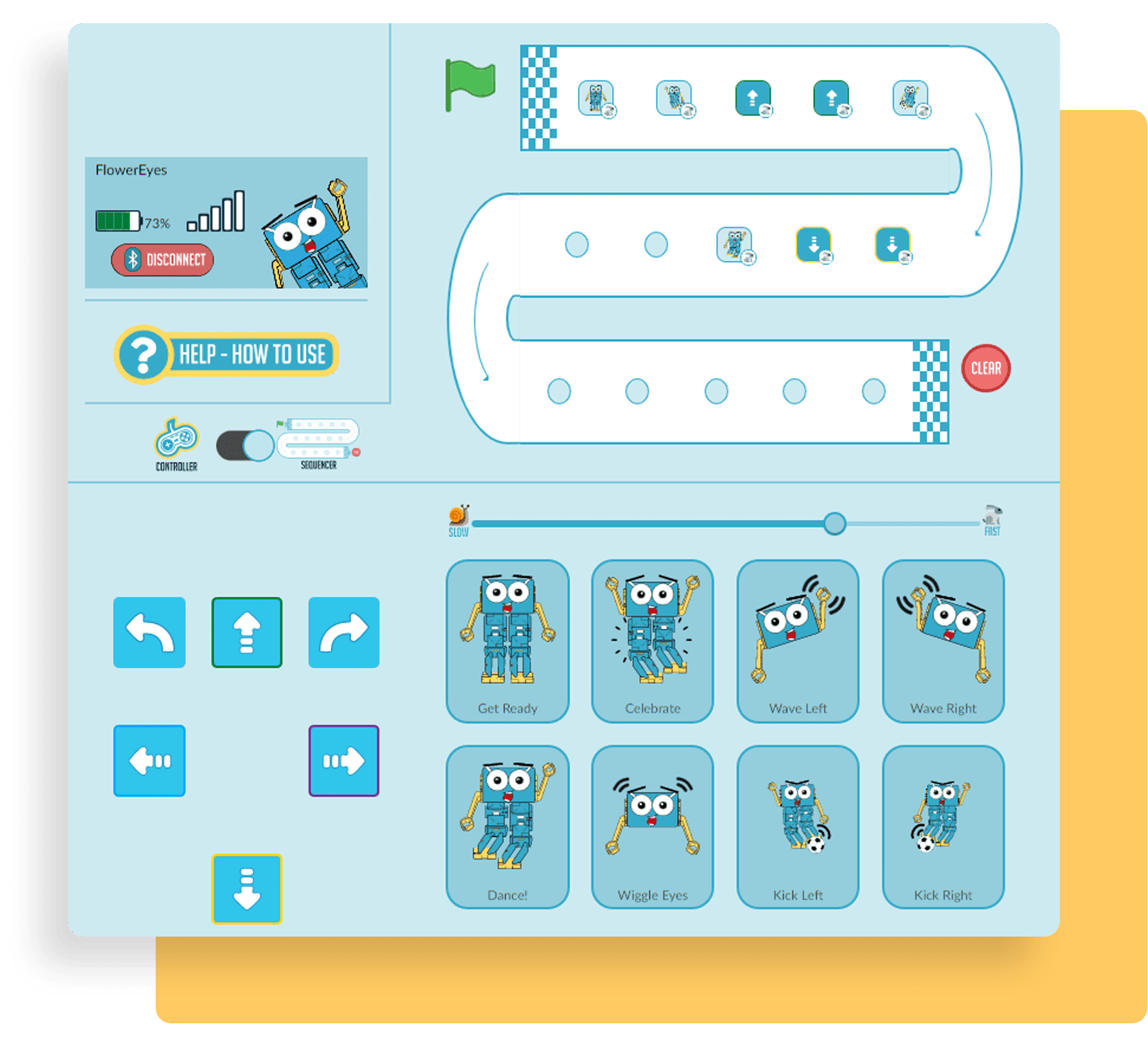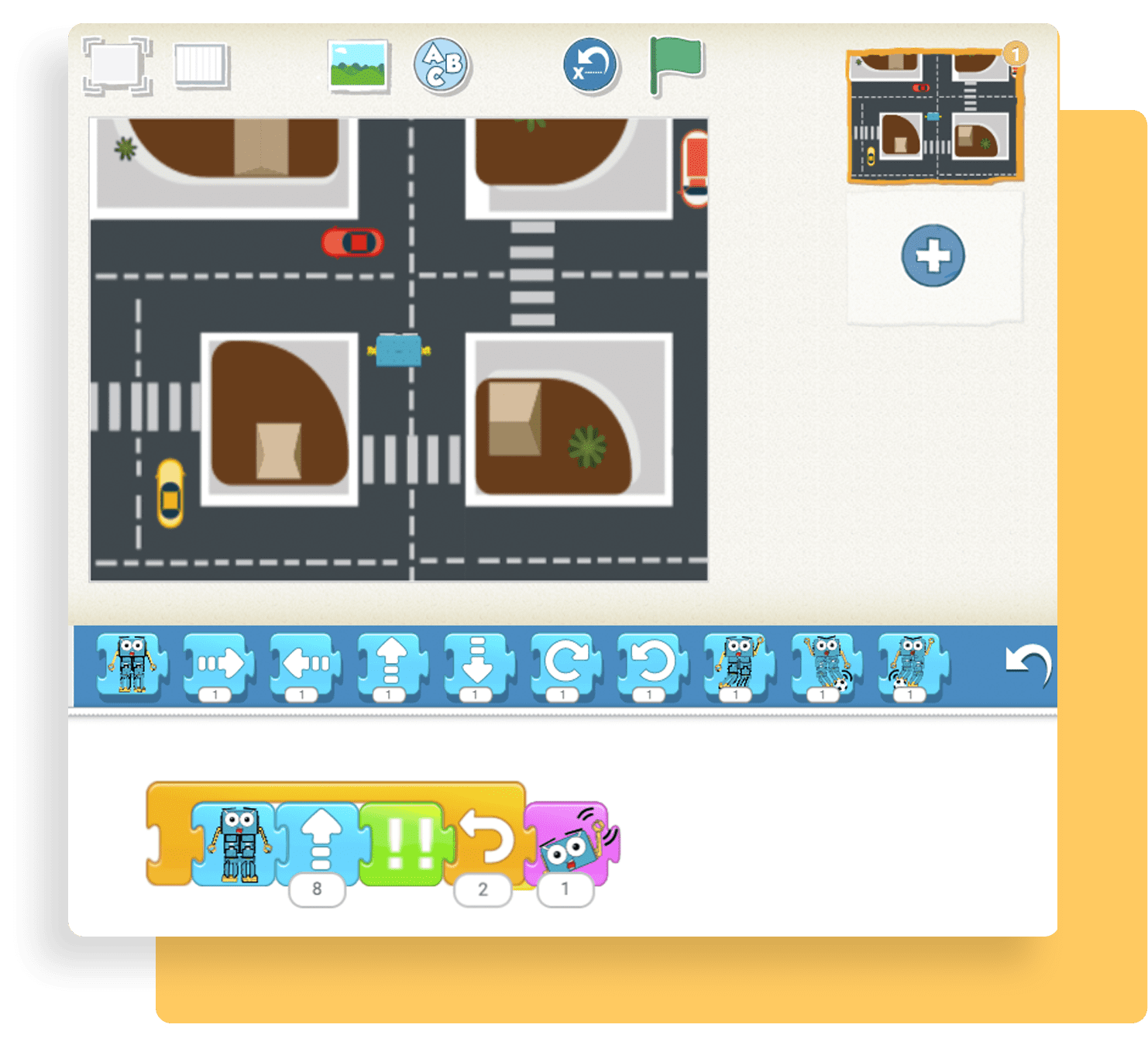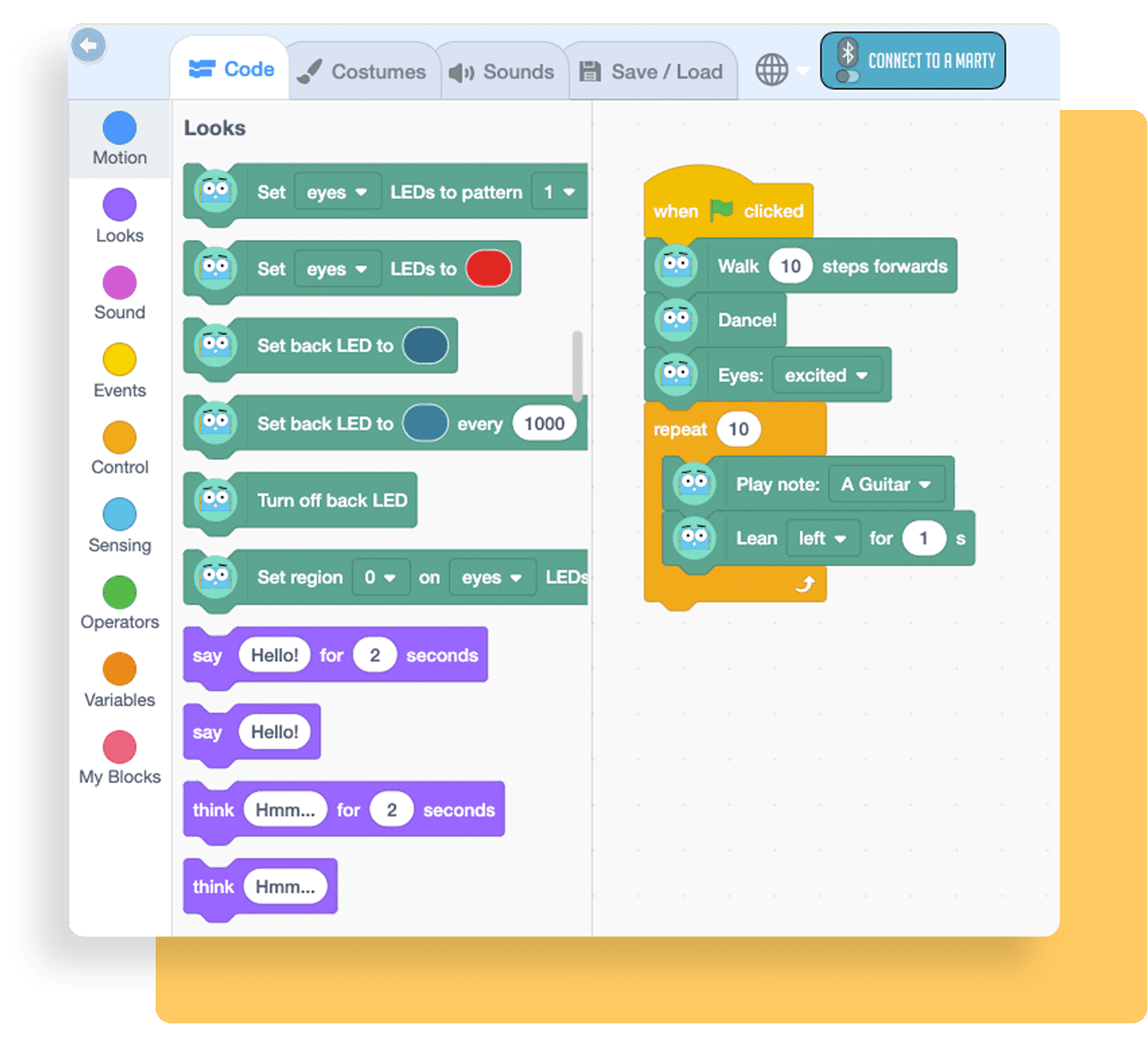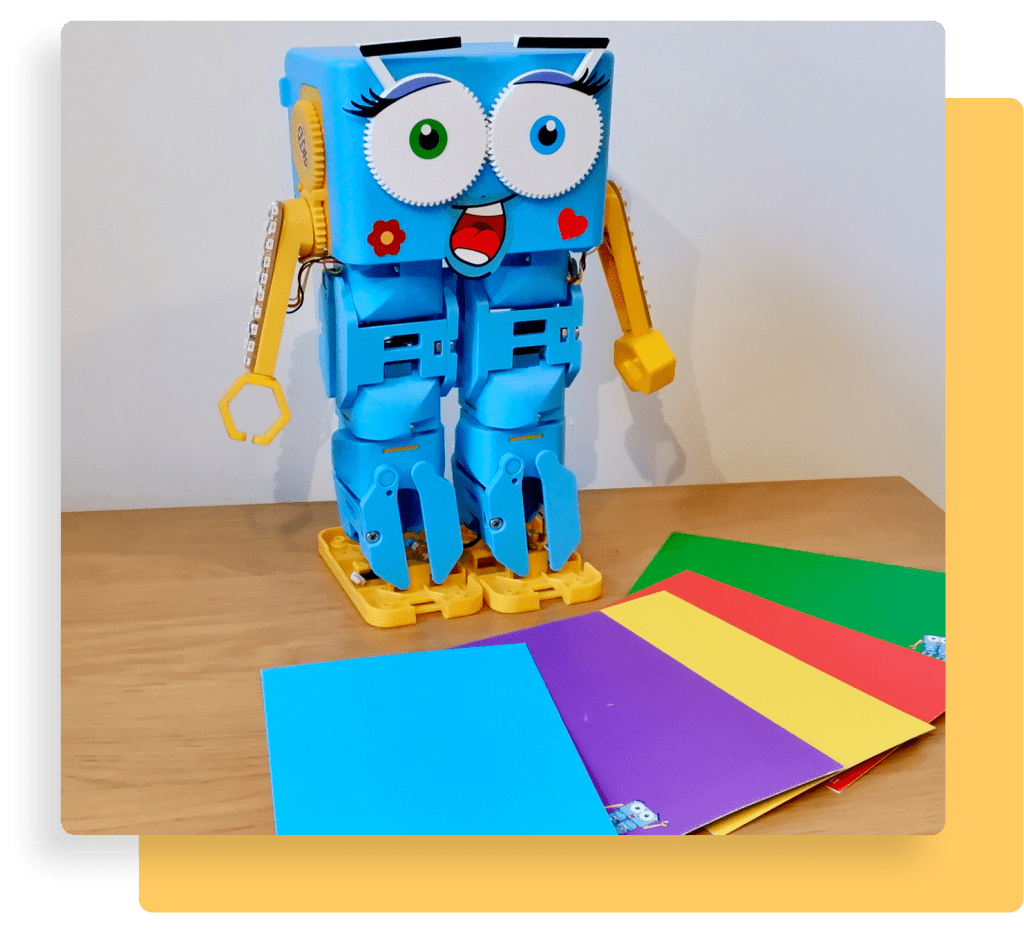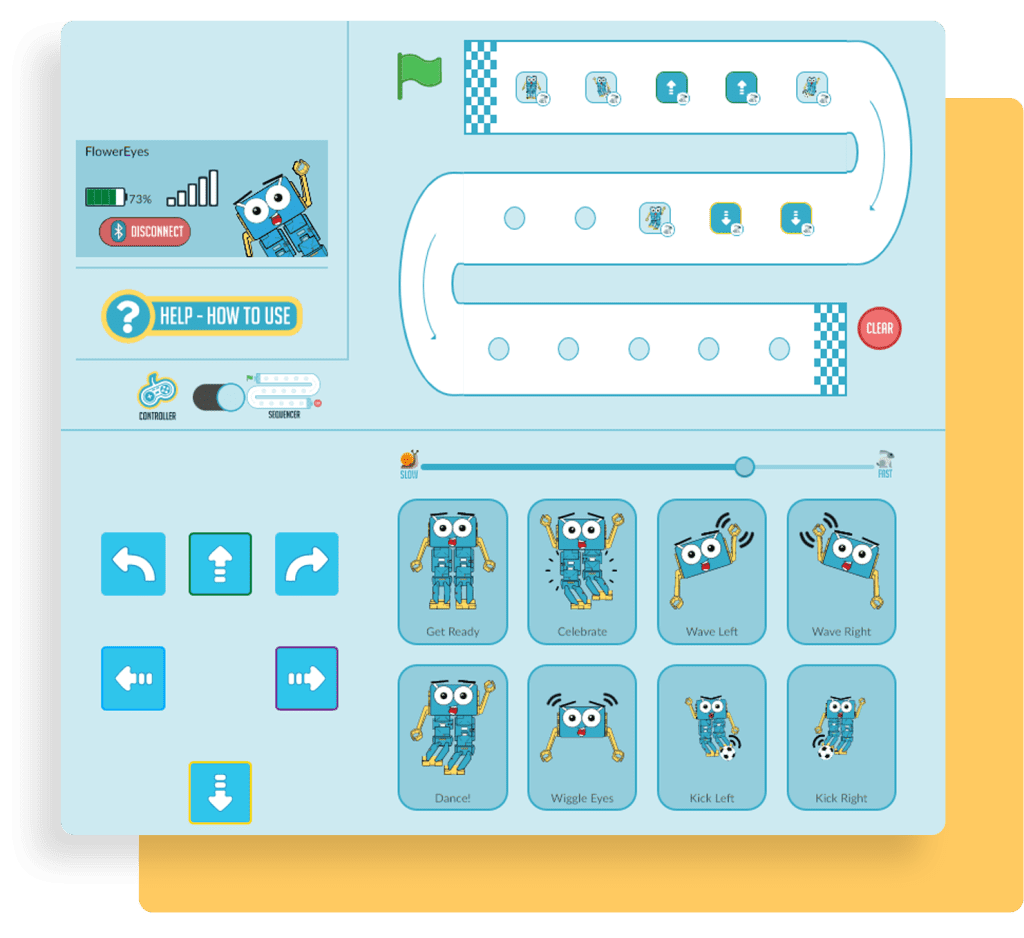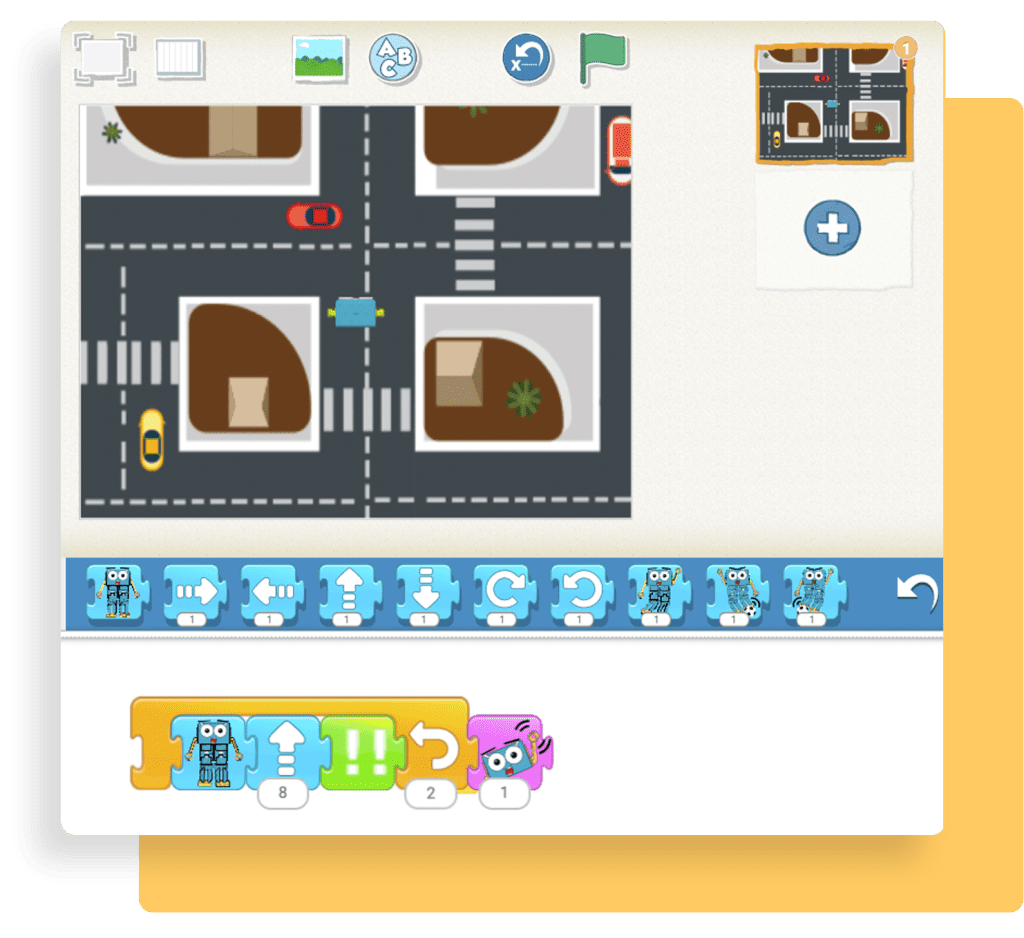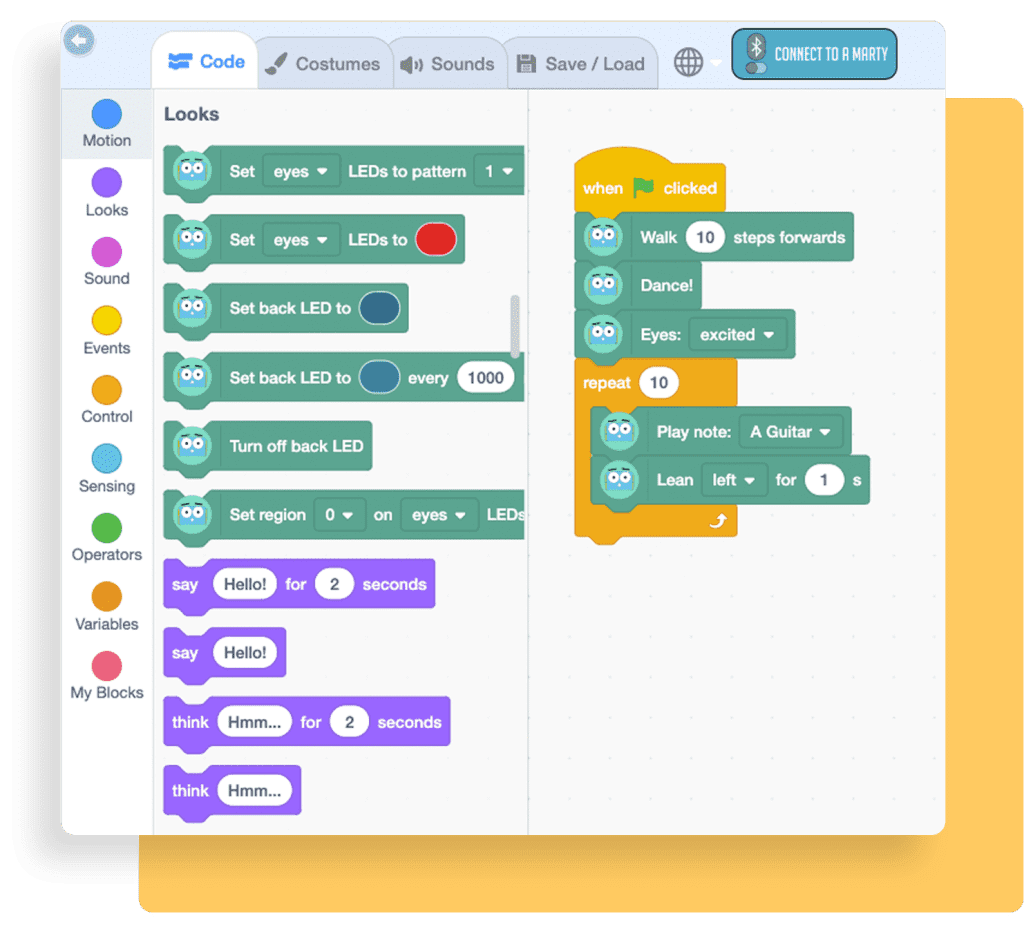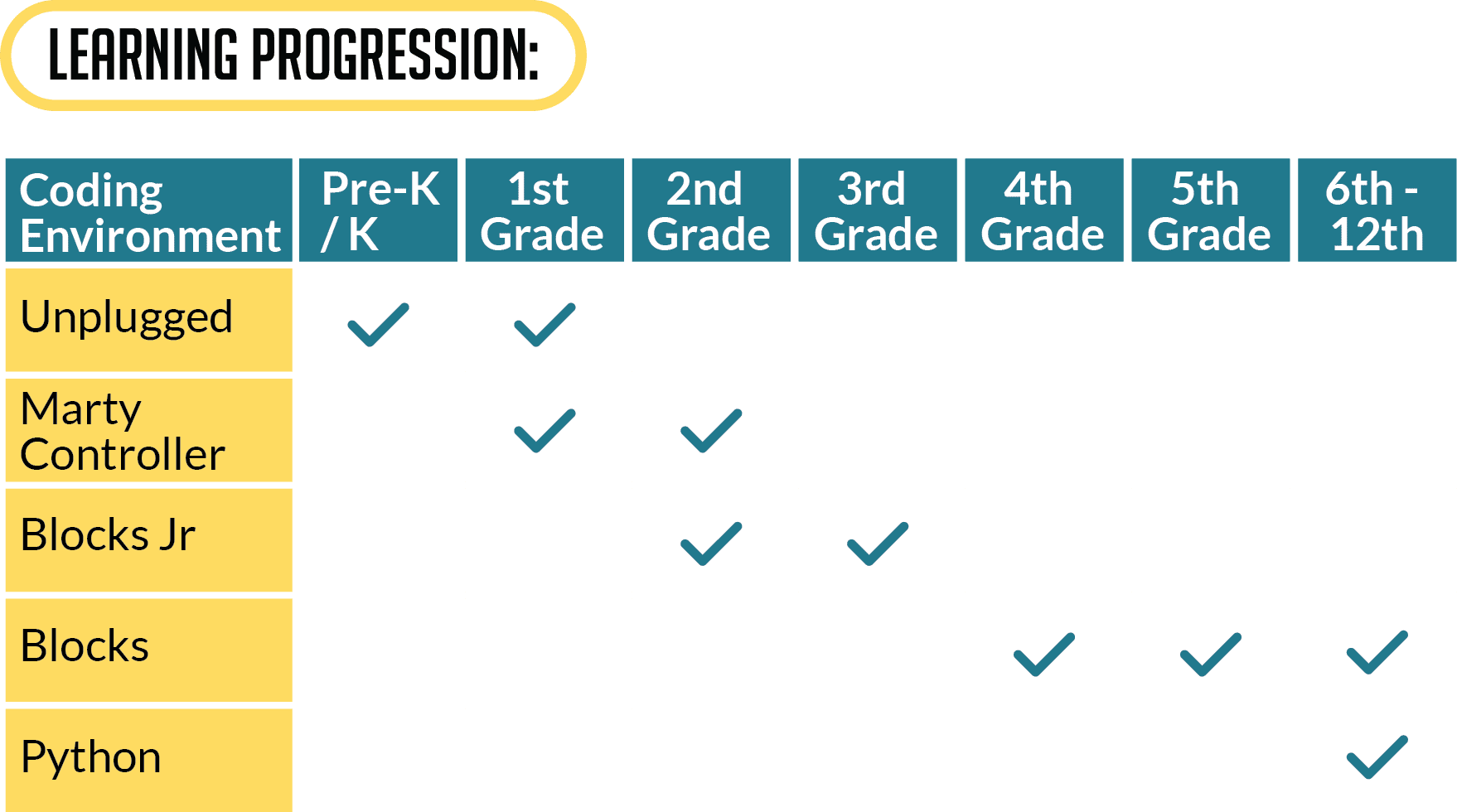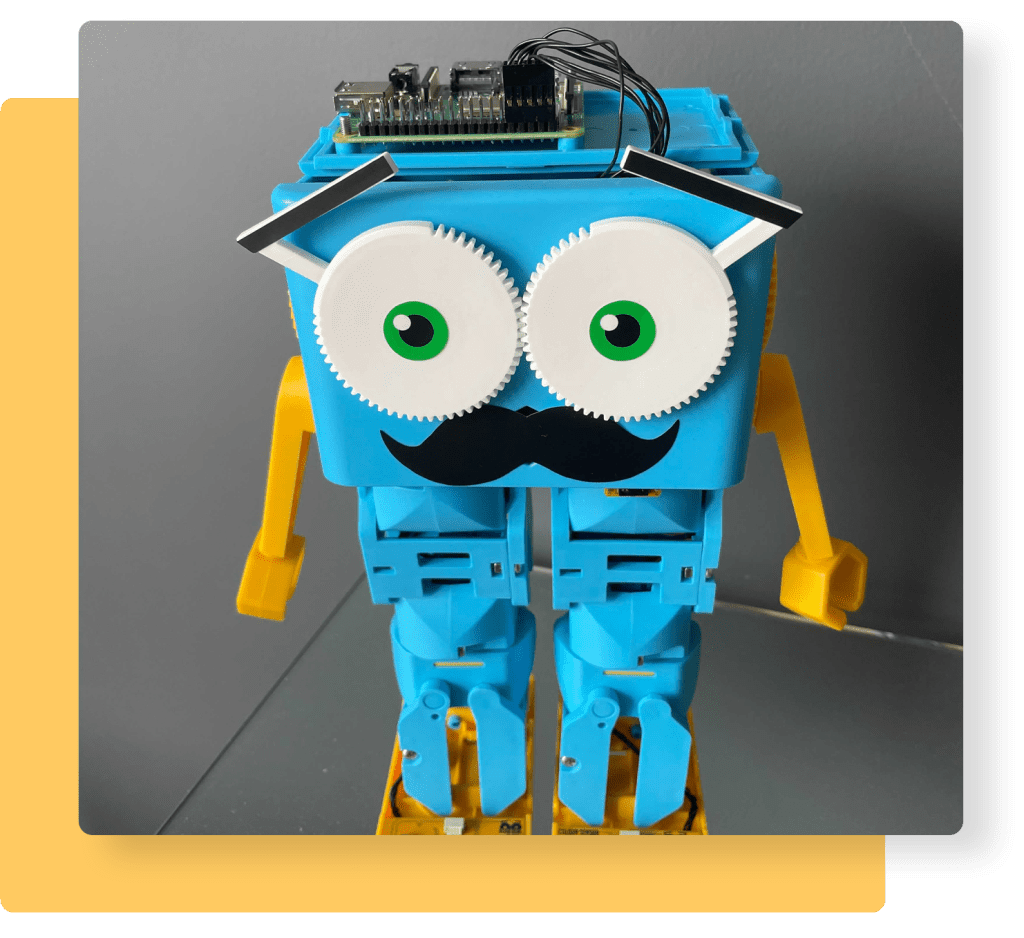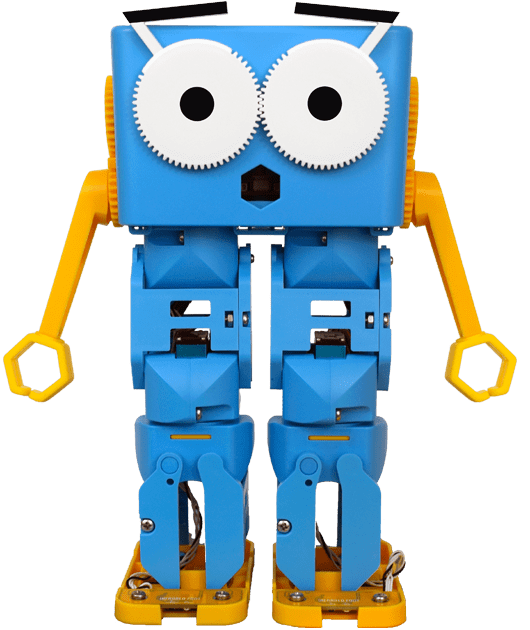PRE-K/K+ UNPLUGGED:
Designed for pre-readers, ‘Marty Unplugged’ offers a screen- and text-free introduction to computational thinking. Learners are challenged to sequence courses for Marty using color commands and, as there are no text blockers, is suitable for learners who are challenged by literacy or are very young (4+). Unplugged provides a range of opportunities for learners to practice developing sequences and reinforces directional language: forward, back, left, right, stop.
CHECK OUT UNPLUGGED LESSONS! →
Grade 1+ Marty Controller:
An opportunity for early-readers to expand their understanding of sequences and add precision to the number of actions they want Marty to complete. Learners are challenged to create sequences with symbolic commands, visualise Marty’s path and plan the steps before running commands with our ‘sequencer’.
CHECK OUT UNPLUGGED LESSONS →
Grade 2+ Blocks Jr:
A step-in to block-based programming with text-free symbols and a horizontal layout, suitable for emerging readers. This environment is based on ScratchJr so should be very familiar to pupils who have used this program. In this environment, learners will see their code come to life both through their physical Marty and via an in-app sprite. Learners can even personalise the sprite and the virtual backgrounds.
CHECK OUT BLOCKS JR LESSONS →
Grade 4+ Blocks:
Suitable for confident readers, Blocks is an extension to Blocks Jr and introduces more functionality through a vertical layout. This environment is based on Scratch and allows for progression beyond elementary school with more advanced work. As code is organized vertically, learners can develop longer blocks of sequences (more similar to how code is written in text).
CHECK OUT BLOCKS LESSONS →



